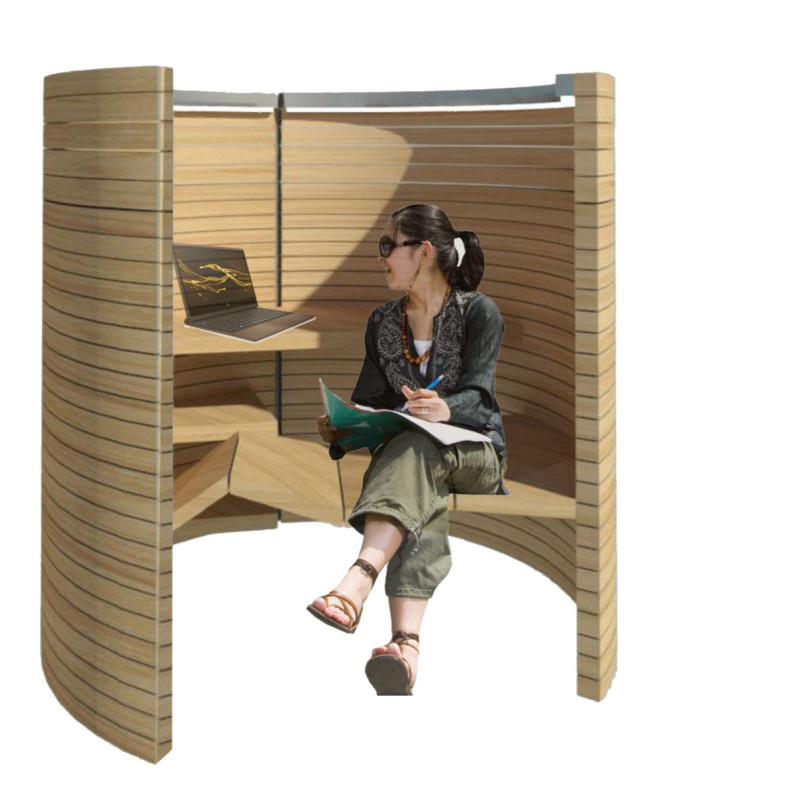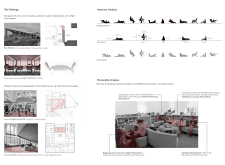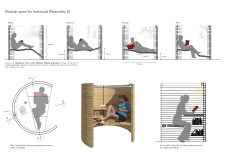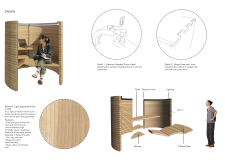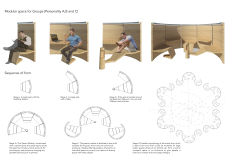5 key facts about this project
The design integrates modular seating arrangements within public transit spaces, focusing on locations such as airports and bus stations. Understanding that waiting is a common experience, the aim is to create environments that enhance comfort and functionality. The project seeks to balance social interaction with individual activities like reading, addressing the varied needs of those passing through these busy spaces.
Modular Space for Individuals
This design features modular spaces specifically designed for individuals who prefer solitude and privacy. The seating incorporates adjustable features that allow users to choose their preferred posture. Users can read or relax comfortably, adapting the seating to their needs. Hinge joints enable the seats to fold and unfold easily, promoting flexibility for varied activities.
Modular Space for Groups
Another key aspect is the arrangement for group interactions. These modular spaces cater to different social dynamics. The design starts with single seats that can adapt to personal preferences and expands to configurations with integrated tables and access to electrical outlets, including USB ports. This progression supports a range of activities, from quiet waiting to collaborative work.
Material Selection
The materials used in the project include light pigmented Oak and Ash. These choices offer both functional and aesthetic benefits. The light to medium brown colors create a warm and inviting atmosphere. Additionally, the materials are durable and easy to work with, ensuring that the fixtures can withstand heavy usage typically found in public spaces.
Design Detail
The careful arrangement of spaces reflects a deep understanding of user needs. Zones are defined to accommodate both individual and group settings. The variety of seating options improves comfort and encourages positive interactions. This thoughtful approach illustrates how design can respond to the everyday experiences of people in transit, making public spaces more engaging and user-friendly.


